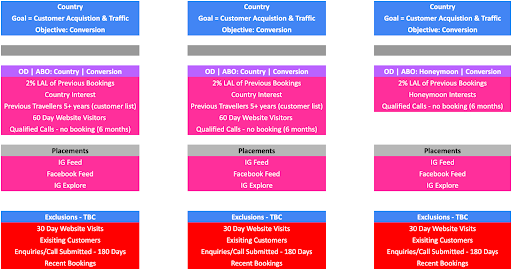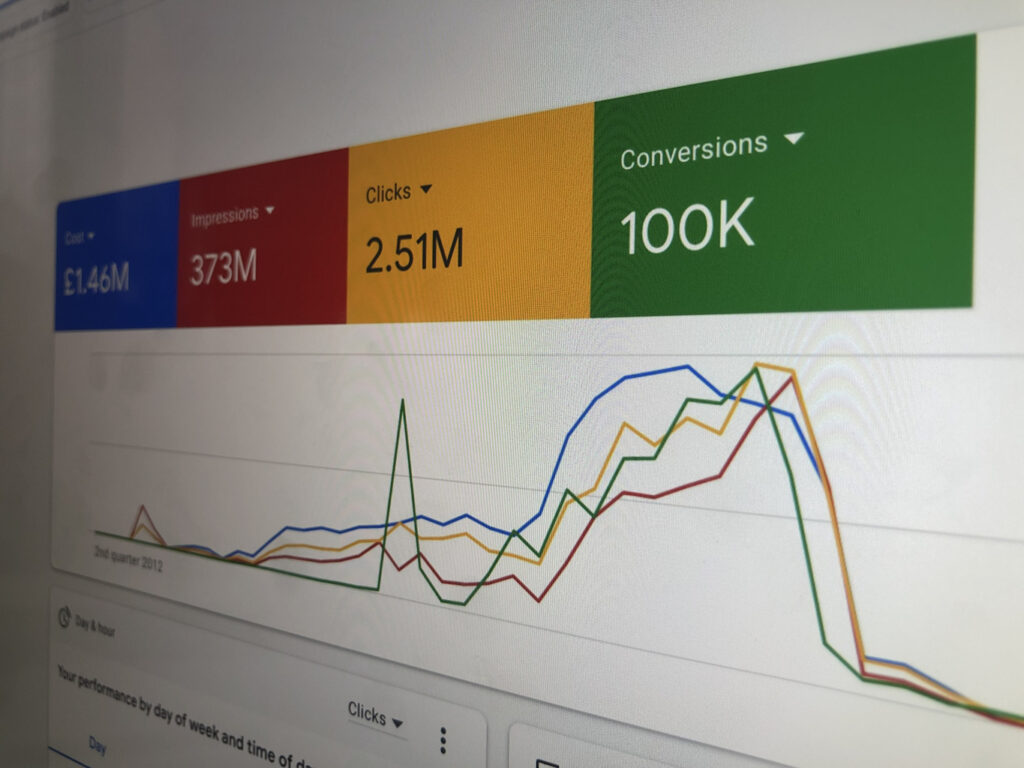Let’s talk about Testing Plans: their purpose and significance, and the systematic approach to creating a well-structured AB testing plan to improve conversions.
An AB testing plan is exactly what it says on the tin – a plan for the array of tests you intend to conduct. As an agency, our framework is structured around a quarterly timeline. Within each quarter our testing plans encompass a broad spectrum of elements, ranging from audience targeting, bidding strategies, creative endeavours, copy composition, and a host of other factors. We work collaboratively with our clients and creative teams to understand what we want to learn and devise the most effective course of action.
So why do you need a structured AB testing plan? With the rise of automation, testing concepts has never been more important. The objective is to explore diverse advertising approaches to learn more about your consumers, the user journey and what happens after they click on your ad. It is through this experimentation that you gain invaluable insight into what resonates with your audience and ultimately leads to more conversions.
Illustrating an effective AB testing plan:
Consider our client specialising in knitting, crochet and yarn patterns. Previously, the most successful campaigns included creative featuring a “before and after” shot of the product. However, recent data indicates that showcasing the yarns in a way to highlight their soft or squishy texture has performed better.
It is important to remember that even the top creative with the top audience can start to see a decline in performance once you have reached the top of the scale. Without testing, you will inadvertently limit your results and performance.
What can you test? There are a whole host of things:
- Creative concepts
- Copy variations
- Audience segmentation
- CTA’s
- Placements
- Bidding Strategies
- Promotional offers such as ‘2 for 1’ or ‘50% off’, campaign budget optimisation vs ad set budget optimisation
- Landing pages, including: content, lay out, CTA placement ect.

How to create an effective AB testing plan:
There are so many variables to consider that it can be overwhelming to create a clear structured testing plan. Below we’ve outlined the key steps to follow to create a plan aligned with your business goals:
Step 1
The best way to start your testing plan is to think about the end. What do you want to learn? For example, do you want to know what creative resonates best or whether an audience performs better than another one?
Step 2
Next, how are you going to do this? When it comes to testing different creative elements, subtle changes may not yield noticeable results. For example, changing the background colour from blue to pink might not provide a significant impact. Make big bold changes to understand your audience’s preferences.
Step 3
Set a specific launch date for your test. Ensure it is targeted toward the appropriate audience, establish a clear timeline for reviewing results and what the KPI’s are for success. It can sometimes be immediately clear whether something is working or not. Don’t waste spend if you are getting immediate results.

Guidelines to formulate a successful AB testing plan:
Here are some guidelines we like to follow when putting testing plans together.
- Keep in Simple: Make sure your tests won’t interfere with other tests. If this means running one test at a time, roll with it. It’s not about getting fast results but how to make your account more efficient and effective.
- Leverage your top performers: Incorporate your top-performing variables into untested aspects of your ads. For instance, if you’re testing your creative, try this in the top-performing audience you currently have.
- One change at a time: Only change one variable at a time when testing. Whether it’s copy or creative, selecting one element at a time will give you a clear insight into the impact of each change.
- Define success: Determine what you are looking to achieve before going live with a test. When you’re evaluating the results, you will know the areas you need to focus on.
- Keep testing: Remember to keep testing. Something that worked in Summer might not work in Winter. The platform is continuously evolving, and so it is important to continually reassess the viability of different approaches. For example, Lookalike audiences may not work as effectively as interest based audiences as we no longer have the ability to track users.
By getting on board with these guiding principles, you’ll be all set to fine-tune your AB testing plan like a pro. This way, you’ll smoothly navigate the ever-changing digital terrain and keep boosting your performance marketing game with unwavering progress.
Final Takeaways
- Test, test and test again! There is never a shortage of things to test and things to learn.
- Make a structured plan and stick to it. Document the results and your plan becomes a tool, highlighting what did and didn’t work.
- Don’t over complicate it. Only test one variable at a time, such as fresh creative or new snappy copy. For everything else, rely on what you know works.
To learn more about how the team at Overdrive Digital can boost your conversions, contact us today.
You might also be interested in Episode 97 if the Marketing Freaks Podcast. We discuss why you need a Paid Social testing plan with our Senior Paid Media Executive.




